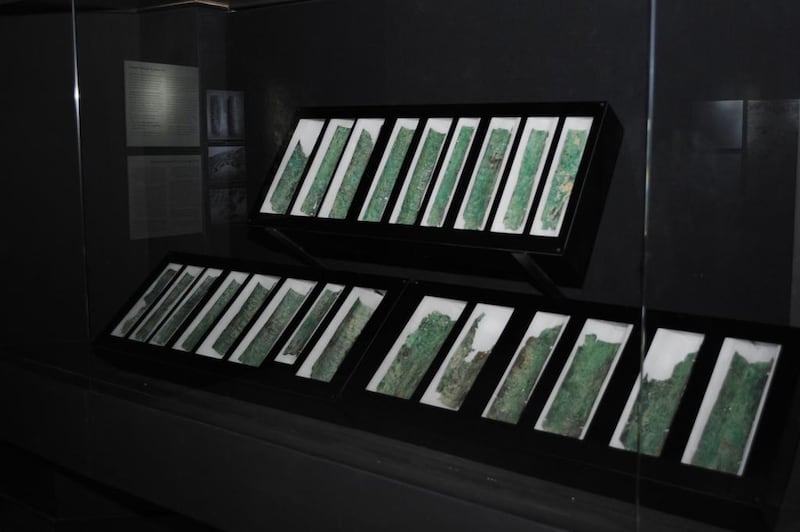At the new Jordan Museum, visitors can gaze at a double-headed plaster statue dating back to 7500 BC. They can also admire ancient stone-carved zodiac signs, Roman columns and a replica of a Moabite black basalt stone bearing a ninth-century BC inscription celebrating Moabite King Mesha's victory over Israel.
If they are interested in burial practices, they can see human-shaped clay coffins and if they want to learn about controversial historical documents, they can visit an area dedicated to the Dead Sea Scrolls – leather, papyrus and copper documents that include some of the oldest-known copies of biblical books, hymns and prayers.
The museum, the largest in the country at nearly 10,000 square metres, is home to archaeological artefacts and cultural exhibits spanning the Stone Age, the Bronze Age, the Iron Age, the Classical and Late Antiquity periods to the Islamic period and modern Jordan. It also features animal bones dating back 1.5 million years.
The museum, which displays pieces on loan from the Department of Antiquities, had its soft opening in January last year.
The grand opening is pending governmental approval of the ticketing system and the completion of work on the second floor, which is dedicated to the Islamic era and modern Jordan.
While other museums around the country focus on the history of the immediate area, the Jordan Museum aims to tell the story of the country as a whole.
“The uniqueness of it would be depicting the story of the land of Jordan and its people through time,” Sharifa Nofa Bint Nasser, the museum’s director, told The Review. “We are looking forward to it to become the storyteller of Jordan.
“It is also a cultural tourist destination for Jordanians that helps them reconnect with their past and understand and respect their cultural identity. We want it to become a hub for families.”
The museum is located in Amman’s Ras Al Ayn downtown area, which is the site of Roman ruins where cultural events are held.
The new complex will also be home to outdoor exhibitions, lecture halls, a library, a conservation centre and an area devoted to children’s activities.
Highlights of the museum include a collection of plaster statues with reed frames dating back to 7500 BC. They were discovered during a joint American-Jordanian expedition at the prehistoric site of ’Ain Ghazal, in north-east Amman, in the 1980s. The site was once a village where farmers, hunters and herders lived between 7200 BC and 5000 BC.
“It was not clear if people at the time worshipped these statues, but what we know is that sophisticated techniques were used. It was a breakthrough that human beings at the time were able to invent new material by burning limestone,” said Yosha Alamri, one of the museum’s curators.
Visitors can also see clay moulds for casting copper vessels and tools that date back to 5000-3600 BC, when the metal was used for the first time.
Also from the same period are the remains of infants interred inside pottery jars, which were buried under the floors of their parents’ houses. “It remains unclear if the jar symbolises the womb, or a convenient coffin buried under the floor to keep the deceased close to the family, or if the weather was too bad for an outdoor burial,” Alamri said.
At the end of the tour, visitors enter an area where the Dead Sea Scrolls and the jars they were kept in are on display. The documents date from the third century BC to the first century AD.
The scrolls were first discovered by a Palestinian shepherd while he was grazing his animals in 1947, a year before the Arab-Israeli war erupted.
The shepherd sold seven to antiquities dealers and others were smuggled into the United States and sold, according to a document at the museum.
The shepherd kept the remaining scrolls’ hiding place secret but two years later, a Jordanian army officer found them in their broken jars. He told archeologists at the Palestine Archeological Museum about his discovery, which led to excavations and the discovery of scrolls in 11 caves.
Two of them are exceptionally rare copper sheet inscriptions that identify locations where hidden gold and silver treasures are supposedly buried.
“Those who read the scrolls looked for the treasures, but they could not find any. Are there any treasures? We don’t know,” Alamri said.
Suha Philip Ma’ayeh is a regular contributor to The National.





